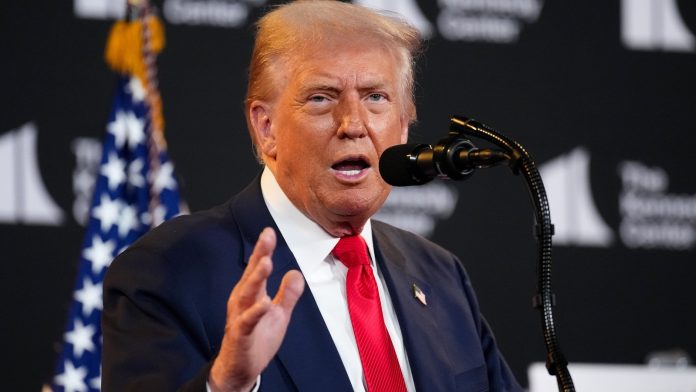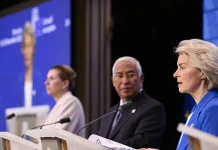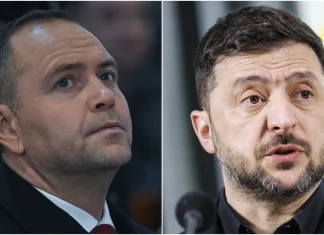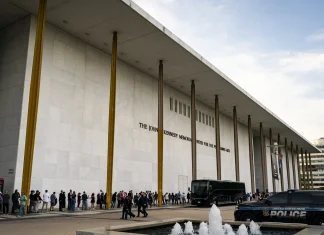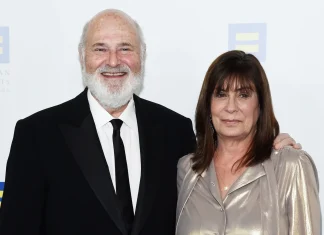On the Precipice of Peace? The High-Stakes Dance of Diplomacy in Alaska
In the shadow of relentless conflict and human suffering, an unexpected possibility flickers on the horizon: a summit in Alaska, set to unfold between two of the most polarizing figures in global politics—US President Donald Trump and Russian President Vladimir Putin. The world watches with bated breath as this summit could either break the deadlock over Ukraine or deepen the geopolitical abyss.
“If the first meeting goes well, I would like to have a quick second one, with President Putin, President Zelensky, and myself,” Trump told reporters with a gleam of cautious optimism. This acknowledgment—offering to include Ukrainian President Volodymyr Zelensky in a three-way dialogue—is pivotal. For many, it signals a potential shift from backroom deals to a more inclusive diplomatic approach. Yet, the timeline remains murky, and the stakes are staggeringly high.
The Alaska Summit: A Crossroads in a War-Torn Era
Set against the rugged backdrop of Anchorage, Alaska, the scheduled Friday meeting between Trump and Putin carries echoes of Cold War summits but within the context of the gravest European conflict in decades. Since Russia’s 2022 invasion of Ukraine, over 15,000 lives are estimated lost and millions more displaced, reshaping the continent’s security landscape.
Local Alaskans speak with reflective caution. Marlene Johnson, a school teacher from Anchorage, shares, “It feels surreal knowing such monumental discussions happen here, thousands of miles from Ukraine. Yet, the ripple effects are global.”
Ukraine has been central to Europe’s geopolitical stability, and the world is acutely aware of the stakes. The possibility of “land swaps” proposed by Trump, suggesting territories could be exchanged to foster peace, ignite fears across Kyiv and European capitals alike. German Chancellor Friedrich Merz was emphatic after a Berlin press conference with Zelensky: “Ukraine must be at the table for any follow-up talks. A ceasefire isn’t just preferable — it is urgent. But without Kyiv, there are no talks.”
A Global Dialogue: Europe, the US, and NATO in Concert
Days before the summit, a flurry of virtual diplomacy unfolded. In Berlin, Zelensky joined European leaders and NATO’s Secretary General to strategize for the Alaska meeting. Ursula von der Leyen, President of the European Commission, tweeted her solidarity: “Today, Europe, the US, and NATO have strengthened our common ground for Ukraine. Nobody wants peace more than us—a just and lasting peace.”
French President Emmanuel Macron added weight to this consensus, highlighting that Trump himself had stated Ukraine’s involvement would be crucial in any discussions concerning territorial changes or ceasefire agreements.
British Prime Minister Keir Starmer struck a cautiously hopeful tone, acknowledging a new “viable chance” at ceasefire momentum due to Trump’s efforts, though Britain remains ready to “increase pressure” on Russia if necessary.
Inside Kyiv: Trust, Suspicion, and the Resolve for Sovereignty
While these exterior negotiations gather steam, inside Ukraine’s capital, the tone is resolute, laced with skepticism. President Zelensky bluntly called out Putin as “bluffing” regarding peace, warning international allies of Russia’s ongoing military pressure to strengthen its territorial claims.
At a press briefing alongside Merz, Zelensky stated, “He is trying to apply pressure before the meeting along multiple fronts. Russia aims to ‘occupy all of Ukraine,’ but no agreement on our land can exclude Kyiv. Ukraine is not a bargaining chip.”
Polls reveal a nation caught in conflicting tides of hope and pragmatism: 69% of Ukrainians favour a negotiated end to the war, yet few are willing to accept terms that betrays their territorial integrity or security guarantees. “Peace, but not at any cost,” became a rallying cry across war-weary communities.
The Diplomatic Tightrope: Between Realism and Idealism
Behind closed doors, Western diplomats and officials fret. A senior Eastern European official confided, “There is a real fear that the US and Russia might cut a deal excluding Ukraine, endangering European security. Our challenge is to remain united, strong, and vigilant.”
Trump’s own team has dampened expectations, describing the upcoming summit as a “listening exercise.” Yet, following weeks of US envoy talks with Moscow, Trump described progress as “great.” Did the diplomatic tide begin to turn, or is this just another round in a long and convoluted game of geopolitical chess?
Land, Sovereignty, and the Future of European Security
The heart of the challenge lies in the concept of “land swaps.” Allowing territorial adjustments as part of peace talks is a controversial proposition with the potential to set dangerous precedents.
- Russia’s demands: In June 2024, Putin’s administration insisted Ukraine withdraw troops from four occupied regions and abandon plans to join NATO—a red line for Kyiv.
- Ukraine’s refusal: Zelensky and his government have staunchly rejected these terms, equating them with surrender.
- European anxieties: Many fear that concessions now could embolden Russia to further expansions westward.
This dilemma—how to balance immediate conflict resolution with long-term security—is a test humanity has faced time and again. Peace without justice is fragile; justice without peace can be bloody and protracted.
Voices from the Ground
Anna, a nurse in Lviv, paints a stirring picture: “Every day, we see the scars of this war—not just on the bodies we treat, but in the hope of our people. Ceasefire talks are good, but they must respect our right to live free on our soil.”
Meanwhile, Sergei Ivanov, a retired officer from Russia’s Far East, voices a more measured perspective. “Leaders must find a way to talk. Wars drain nations. If this summit leads to even a small reduction in bloodshed, that is worth pursuing.”
What Lies Ahead? The Global Ripple Effects
The Alaska summit will inevitably be dissected far beyond the icy wilderness of its setting. Could it reshape international approaches to conflict resolution? Might it reset US-Russia relations, or further strain the fragile alliances holding a post-Cold War order?
For readers around the world, the question remains visceral and immediate: Can diplomacy tame the fury of war, or will this high-stakes encounter be yet another missed opportunity?
As Ukraine clings to sovereignty and Europe braces for uncertainty, the summit symbolizes something deeper—the timeless struggle between power and peace, between old rivalries and new hopes.
So, as the leaders prepare to shake hands on Friday, we may ask ourselves: in an age marked by fractured alliances and shifting borders, what does it truly take to broker peace that lasts?
Keep watching, keep questioning, and above all, keep hoping—for history’s course can change in an instant, and with leaders willing to listen, the future remains unwritten.


